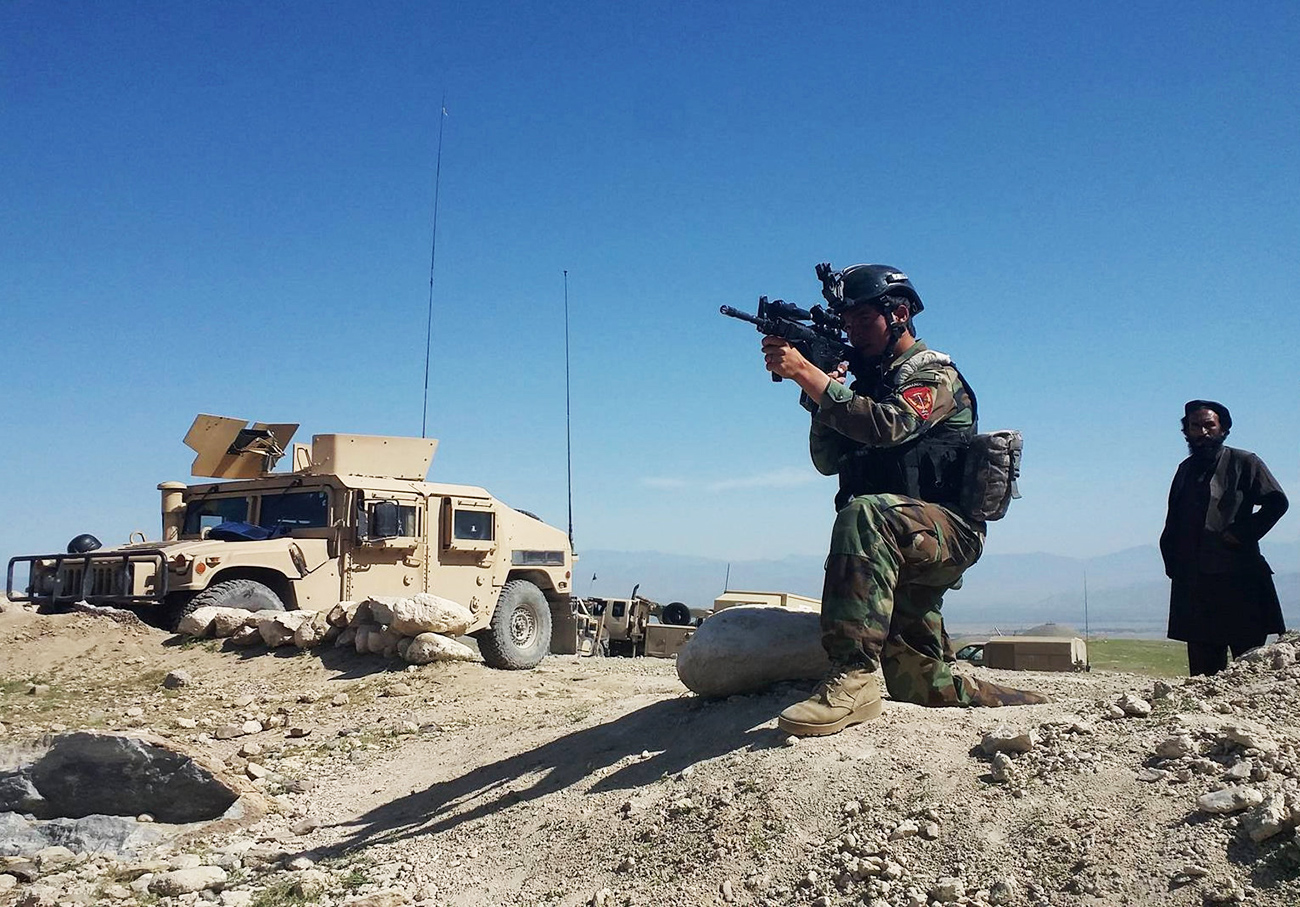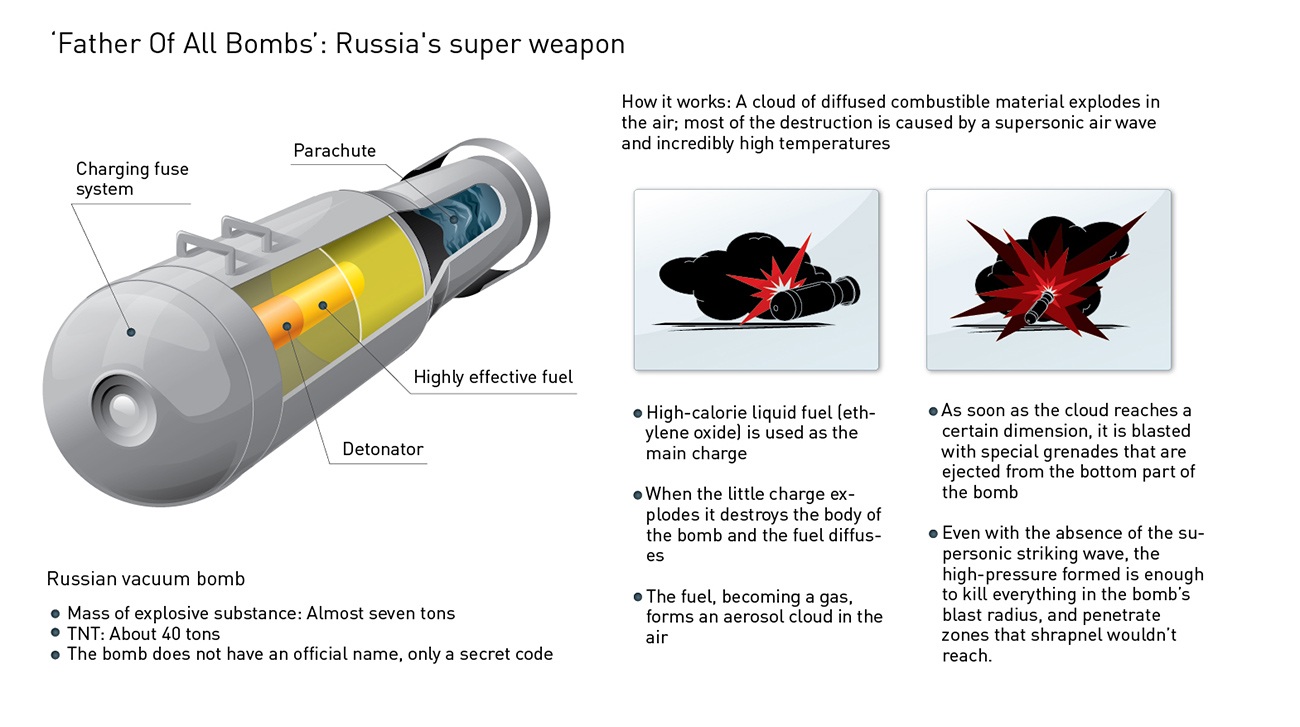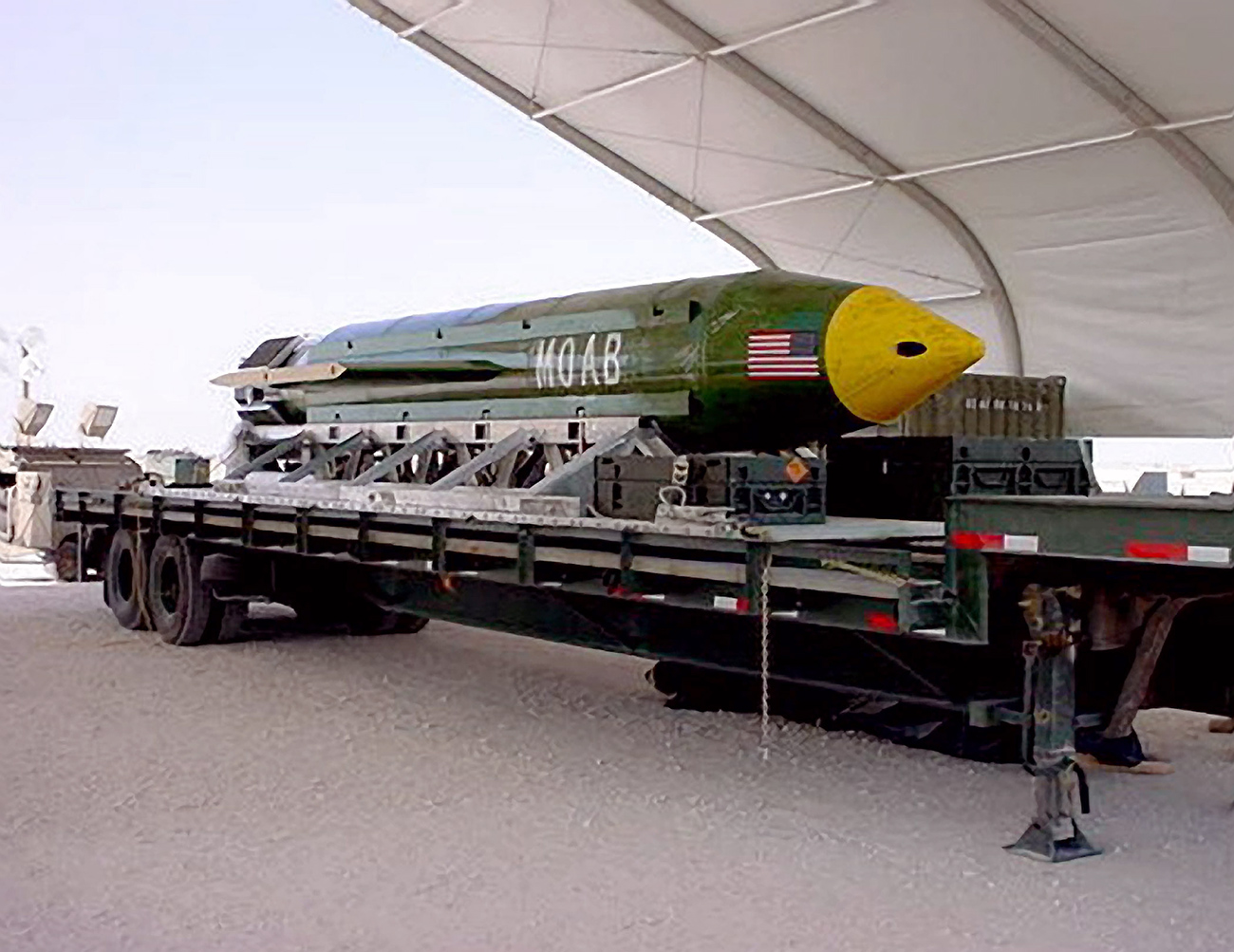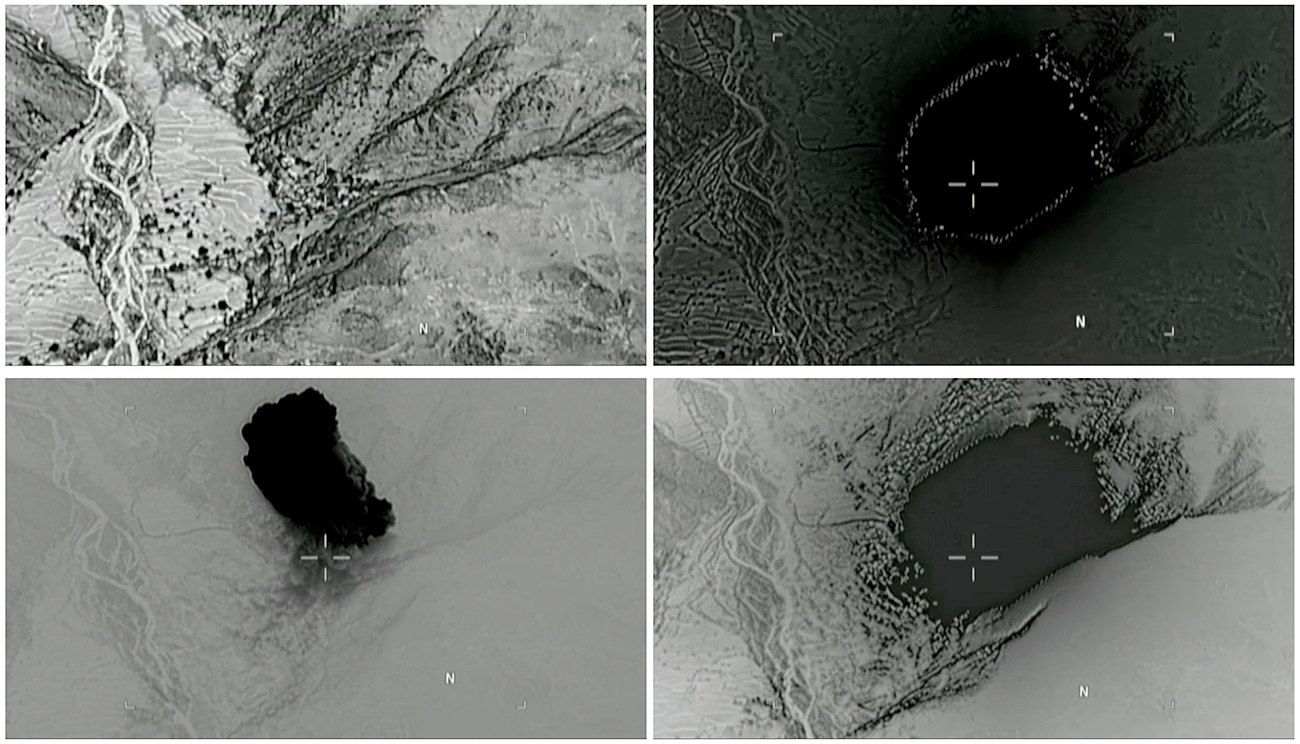Mom or dad: Russia has a more powerful bomb than the U.S.

A member of Afghanistan special forces point his gun as he observes the enemy lines in Achin district of Nangarhar province, in eastern Afghanistan April 14, 2017
ReutersThe American GBU-43 bomb that was used on April 13 to strike an Islamic State compound in Afghanistan acquired the nickname "The Mother Of All Bombs." It’s power is equivalent to 11 tons of TNT. It was the bomb’s first run out in combat since its creation in 2003.
Its Russian equivalent appeared four years later and turned out to be four times more powerful, acquiring a name no less spectacular – "The Father of All Bombs." The new bomb was tested on September 11, 2007, on the sixth anniversary of 9/11. The Russian military said it was created to fight terrorism.
What's the advantage of these super bombs?
The strike on ISIS positions on April 13 killed at least 36 militants, destroyed caches of weapons and military technology, and several secret underground tunnels. President Donald Trump called the U.S. Armed Forces’ operation "a very successful mission."
Russia's answer to the GBU-13 is known as a Thermobaric Air Bomb (TAB). Its destructive power is comparable to that of a nuclear warhead. However, it doesn’t leave behind a radioactive cloud thanks to its so-called thermobaric explosion.
 Its destructive power is comparable to that of a nuclear warhead. Father Of All Bomb. Source: RIA Novosti
Its destructive power is comparable to that of a nuclear warhead. Father Of All Bomb. Source: RIA Novosti
"Ordnances such as the TAB, although less powerful, have been used in various wars in the last 50 years. The Americans used them to clean out the jungles in Vietnam, where they sent in their helicopters afterwards, and the Soviets used them to clean out the Tora Bora caves in Afghanistan, where the Mujahedeen used to hide," said Professor Vadim Kozyulin from the Academy of Military Sciences.
In his words, the most powerful bombs in the Soviet Union and Russia were the TAB-1500 and the FAB-9000.
 The GBU-43/B Massive Ordnance Air Blast bomb sits at an air base in Southwest Asia waiting to be used should it become necessary. Source: ZUMA Press/Global Look Press
The GBU-43/B Massive Ordnance Air Blast bomb sits at an air base in Southwest Asia waiting to be used should it become necessary. Source: ZUMA Press/Global Look Press
The Russian bomb's construction
The Father of All Bombs’ has a special nose that creates a deadly impact: "The aerosols [inside the nose] turn into a mixture that is detonated by the fuse. The bomb creates a striking wave that at the point of explosion forms an airless vacuum. And thanks to this change of pressure, all objects in the explosion's epicenter literally explode from within, be it people, technology, fortifications, or any other defensive structures belonging to the enemy," explains Alexei Ramm, an analyst from the Izvestia daily newspaper.
According to The National Interest magazine, despite its smaller volume, the Russian bomb is four times more powerful than its American counterpart. It’s blast is equal to 40 tons of TNT, while the Mother's explosion is equal to 10 tons of TNT. Also, the Father's striking range is 20 times larger than the GBU-43. However, the fate of the Russian bomb is unknown. Since 2007 there have been no recorded tests or uses of the weapon.
 Al Weimorts (left), the creator of the GBU-43/B Massive Ordnance Air Blast bomb, and Joseph Fellenz, lead model maker, look over the prototype of the bomb before it was painted and tested. Source: ZUMA Press/Global Look Press
Al Weimorts (left), the creator of the GBU-43/B Massive Ordnance Air Blast bomb, and Joseph Fellenz, lead model maker, look over the prototype of the bomb before it was painted and tested. Source: ZUMA Press/Global Look Press
Ramm stressed that the Thermobaric bombs are classified by the UN as "non-human warfare sources that cause extreme human suffering."
Ramm: "Nevertheless, the weapon has not been banned by any UN conventions and has not been a part of any agreement on arms reduction. Russian experts believe that this bomb can be replaced by a series of tactical nuclear warheads that Russia is armed with. The U.S. maintains the same position concerning its small nuclear warheads."
 A combination of still images taken from a video released by the U.S. Department of Defense on April 14, 2017 shows (clockwise) the explosion of a MOAB when it struck the Achin district of the eastern province of Nangarhar, Afghanistan. Source: Reuters
A combination of still images taken from a video released by the U.S. Department of Defense on April 14, 2017 shows (clockwise) the explosion of a MOAB when it struck the Achin district of the eastern province of Nangarhar, Afghanistan. Source: Reuters
Consequently, Ramm concludes, the U.S. Congress has decided to accelerate the development and production of this type of weapon. The American military does not hide the fact that it’s creating this weapon to strike nuclear objects in Iran and North Korea.
Read more: Is Russia helping China build hypersonic weapons?>>>
If using any of Russia Beyond's content, partly or in full, always provide an active hyperlink to the original material.
Subscribe
to our newsletter!
Get the week's best stories straight to your inbox